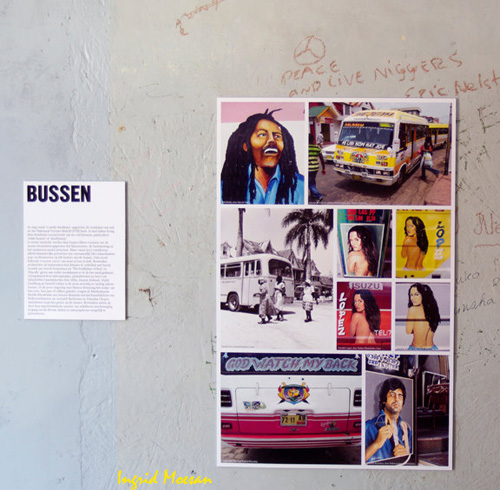
Images of bus paintings installed in the Schaafijs en Wilde Bussen exhibition; photo by Ingrid Moesan
Paul Faber, co-author of Schaafijs en Wilde Bussen: Straatkunst in Suriname, reports on an “Art Conversation” which brought together some Paramaribo SPAN artists and various street artists best known for their paintings on buses, walls, and shopfronts
Sunday evening, 7 March, 7 pm. Location: the garden of DSB Bank in Paramaribo. Inside and outside the central pavilion the works of the SPAN artists have found their own environment. Tonight the exhibition receives some special guests, a group of painters who make their living by painting buses and walls.
These painters rarely visit art exhibitions. They are here by invitation, because they created works that will be presented in an exhibition of their own, Schaafijs en Wilde Bussen, at Fort Nieuw Amsterdam. Sirano Zalman gives a guided tour for the street artists and other visitors. He shows the works, gives explanations, introduces other participating artists, such as George Struikelblok.
At 7.30 the crowd gathers in the back garden near Roberto Tjon A Meeuw's Fatu Bangi, a nice piece of wooden art-furniture, in front of a big clump of bamboo. About seventy people are present: the artists from both exhibitions, other interested artists, and art lovers. Magnificent palm tress and flowering bushes illuminated by hundreds of lights form a wonderful setting.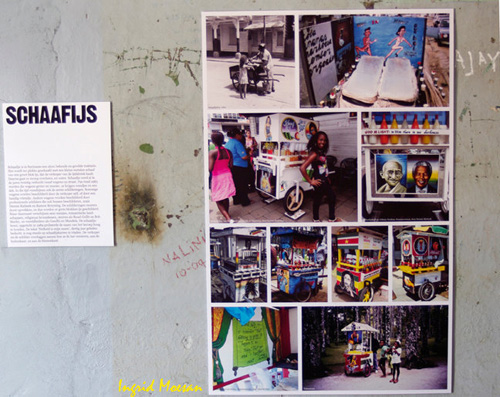
Images of painted shaved-ice carts in the Schaafijs en Wilde Bussen exhibition; photo by Ingrid Moesan
Karin Lachmising leads the conversation that unfolds over the next hour. Can you have a meaningful conversation between seventy people? Amazingly, the answer is an outright yes. The underlying question of this conversation is to discover how these two groups relate to each other. They obviously move in different circles, hardly know each other, and their jobs are structured in different ways. On the other hand, they are all “visual workers”, as someone puts it, and are dedicated to their work: how do they see each other’s work and (how) can they learn from each other?
The conversation, moving from one artist to another, touches in a natural and respectful way on all relevant issues. One of these is the message of the work. Some of the SPAN artworks deal with complex issues like pollution of the environment, suicide, and orphans. The commentary given during the tour helps a lot to explain the thoughts behind them, Ghalied Khodabaks says. The SPAN artists were obviously involved in what they wanted to say. But, as several discussants state, the street artists have their message too, more specified and narrow, but very clear at the same time. The bus painters concentrate on stars and heroes, emblems of beauty, to attract people. The painters of advertisements depict all kinds of products, like tomatoes or beer, in a way that makes the onlooker very thirsty indeed. It is the art of seduction, someone suggests.
The origin of this difference in the character of the message can be found in the relation with the commission. As André Sontosoemarto explains, the street artists have to deal with the clients, often companies, who order the paintings, and have specific requirements. The freedom of choice is limited for the painters, but not nil. The margin shows in the continuous innovation and development of ideas, techniques, and motifs.
It depends also on the artist's reputation. The bus painters like Ramon Bruyning and the Khodabaks brothers are known for the quality of their work and often get a free hand in the choice of motifs. Sirano admires their skills: how did you learn to paint so well, he asks. André explains there is hardly proper schooling in advertisement painting. Ideas to do something about this are presented on the spot. The bus painters are largely self-taught. They learned their art by using their eyes and practising with their hands, over and over again. Their standard is exceptionally high, also by international standards. Another interesting difference comes to light: the stage and the audience. “The whole city is our exhibition hall!” the street painters state proudly.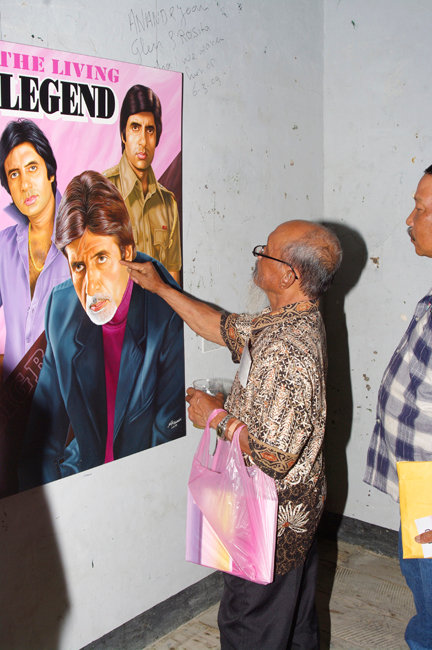
Soeki Irodikromo looks at one of the specially commissioned paintings; photo by Ingrid Moesan
At this point, the input of several painters of the older generation is enlightening. René Tosari, Winston van der Bok, John Djojo, and Steve Ammersingh were part of the artists’ collective Waka Tjopu, founded in the early 1980s. They relate the discussion of tonight to the objectives and ideals of then. Waka Tjopu brought art into the street, went for direct communication, painted large billboards, and avoided the use of the word “art”.
These stories link tonight’s conversation with a broader and deeper tradition in the Surinamese world of “visual workers”. A passionate speech by grand old man Soeki Irodikromo, whose daughter Sri participates in Paramaribo SPAN, rounds up this highly interesting evening. He implores people to continue this exchange, suggested that the painters leave some permanent mark in Fort Nieuw Amsterdam.
Tonight the street artists were confronted with a number of new ideas and possibilities, but also with respect and appreciation from new-found colleagues. Next Friday a nicely painted bus will leave from the Paramaribo SPAN exhibition venue for Fort Nieuw Amsterdam and the opening of Schaafijs en Wilde Bussen. After a quick family meeting, the Khodabaks brothers announce that they will provide the bus, which is bound to be a high-class example of their Bollywood style. It is a nice thought to be able to travel inside an artwork to an opening.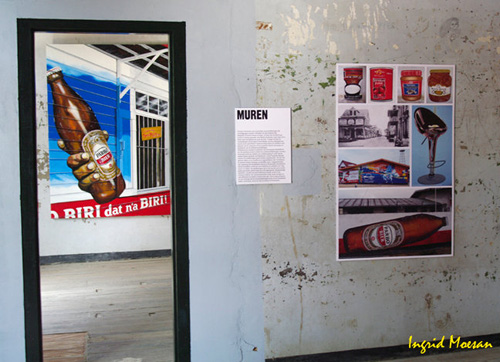
Images of wall paintings in the Schaafijs en Wilde Bussen exhibition; photo by Ingrid Moesan
Schaafijs en Wilde Bussen, an exhibition of Surinamese street art (including specially commissioned works) runs from 13 March to 2 May in the Open Air Museum of Fort Nieuw Amsterdam in the Commewijne district.
Diary: SPAN meets street
Monday, March 15, 2010
at 6:08 PM
Labels: diary, faber, fort nieuw amsterdam, minibus, soeki irodikromo, street painting
Subscribe to:
Post Comments (Atom)




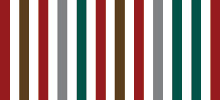

0 comments:
Post a Comment